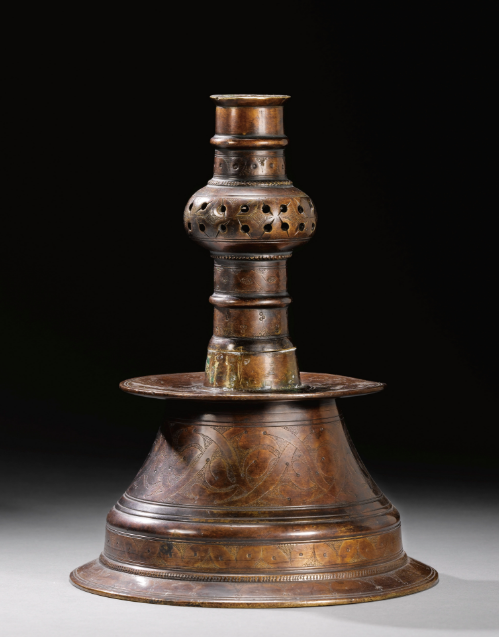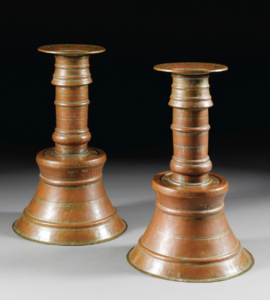
Cast bronze candlestick, circa 1500. Source: Sotheby

Tinned copper candlesticks, 16th century. Before the tinning wore off, they would have looked silver. Source: Sotheby
Candlestick. Since candlesticks were set on the floor, the broad, bottom-heavy base prevents the candlestick from being kicked over. Although lighter, more European styles began to appear in the 17th or 18th century, this style continued to be made into the 20th century.



